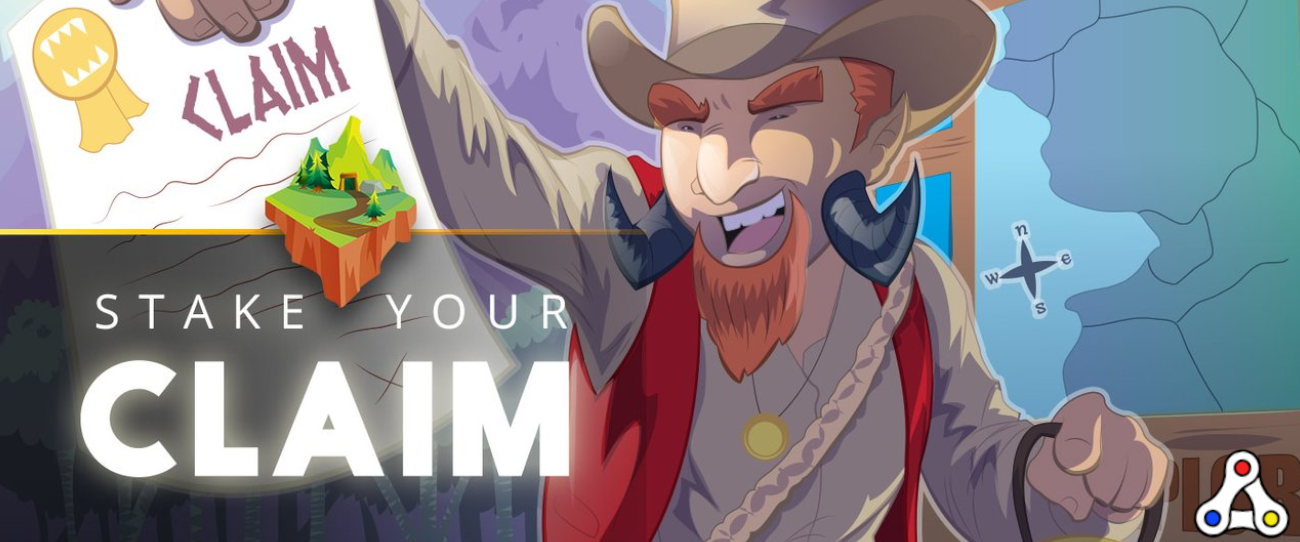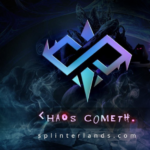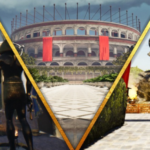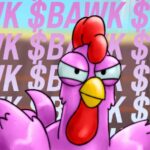On November 7th at 16:00 UTC Splinterlands will start its presale for virtual land. The developers call the introduction of land their biggest expansion ever. But what type of gameplay and benefits does this virtual land bring to the table? Let’s take an in-depth look!
Splinterlands will introduce a new game mechanic called Items & Spells. Once players have selected their summoner and monsters for battle, they get to see each others deck. During that time players get to play these items and spells to boost their own team or debuff the opponent. These items and spells aren’t collectible cards, they are craftable. Players need to obtain resources and access to buildings in order to mint spells and items for themselves. Owning virtual land is crucial for the economy in this upcoming expansion.
Different lands, different use-cases
On the continent of Praetoria players will find fourteen different terrain types, ranging from plains, hills, and swamps to lakes, deserts, and badlands. In addition, these plots can be natural, magical, or occupied. The majority of lands will be natural, containing grain, wood, stone, or ore. These resources are needed to build, upgrade and maintain buildings. Magical lands provide magical resources, based on the six Splinter magic forms. These are required components to create items and spells. Thirdly, occupied land contains monsters to battle. After defeating them (card-based gameplay!), players earn Essences. That’s another required item for creating items and spells. Finally, each land plot has a rarity, which determines the amount of available resources.
Each plot of land can contain one building. Constructing and upgrading a building requires natural resources, and players can speed up construction time by spending their DEC tokens. Landowners can destroy a building freely, to receive some of the used resources. In order to make a building function, players need to deposit a worker. This can be any card in their collection. However, which card you use influences the RNG when minting Items & Spells.
Splinterlands land prices going up
The team has no immediate plans to open up the other continents for land sales, unless there’s a tremendous influx of players in the future. Praetoria consists out of 150 thousand land plots with a minimum price of ten dollars a piece. When the lands go of Praetoria go on sale, you won’t know which one you’re getting. Faith decides.
There will be 150 thousand land plots of 10 acres each. One hundred of these combined plots of land is something the developers call a Tract. Ten of these tracts combined, form a Region. That means that a region consists out of one thousand plots of land. Investors and players can buy virtual land in bulk, by buying a Tract or a Region.
The smallest plot of land will cost 20 dollars. Buying a tract with 100 plots of land will give a 15 percent discount, while a region with one thousand plots offers 25 percent discount. However, during the pre-sale everything is cheaper. Fifty percent discount during the first week, 40% during the second week and thirty percent during the third week. Each piece of land is an NFT. The location of land is a bit randomly assigned. However, Splinterlands wants to make sure that players who buy in bulk will have their land located as close to each other as possible.
Buy virtual land for Splinterlands, and you will also get raffle tickets. These tickets give you a chance for more land, but also for Totems. These totems can – right now – only be obtained through the raffle. Each totem will provide one very specific type of benefit, for example it may speed up Death Splinter Item card minting time, increase the rate of Sparkstone harvesting, or reduce the maintenance cost of a Farm building. In the future their will be other ways to find these totems.
Governance and castles
Lands will provide resources and the opportunity to store or use these resources. Regions function as a state within a larger country, and a Region provides infrastructure for transport and other services. They will charge fees though to plots and tracts. Governance for the region happens through voting, and each plot gets one vote. Owning a tract gives the owner 10 percent of the votes in a region.
In each region there’s one plot of land with a castle, in addition each tract contain a keep. These are special buildings, but their functionality hasn’t been revealed yet. In short: each region has nine keeps and one castle, each tract has a keep and a ten percent chance for a castle, and an individual plots has a 1 percent change for either a Keep, and one in a thousand chance for a castle.
Renting land
Landowners in Splinterlands will be able to rent their lands to other players. The developers claim that the management of land, buildings and resources is an involved process, and this could be challenging for players with a large number of plots. Players could decide to rent a land parcel to obtain certain resources or to get access to certain services, like for example a spell factory.
What is Splinterlands?
Splinterlands is a trading card game that started on the Steem blockchain as Steemmonsters. However, over time the project changed names. Now gamers can play the game on desktop and mobile devices, mainly using the Hive blockchain. Thanks to an intelligent functionality, cards, and tokens can also be traded on the Ethereum blockchain.
Splinterlands allows anybody to play and earn cards and other resources. Players need to create a set of cards to defeat their opponent. Cards come in different rarities with seven different stats. In addition, these cards have abilities and come from seven factions. The way cards work together is dependent on all these different attributes.
Players earn cards by winning matches. They can combine cards to gain levels. After that, you can sell cards on the open marketplace for cryptocurrencies, or lease them to other players. The rarest cards are wanted assets, especially when there are tournaments.
Read our Splinterlands Game Guide and visit the Splinterlands website to start playing.





